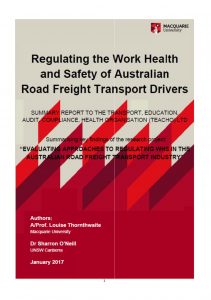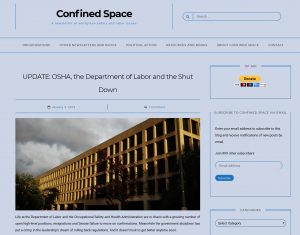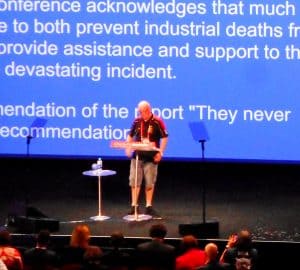 The strong readership of the article on truck driver safety based on the research of Dr Clare George resulted in one reader remind me of Australian research from 2017 that looked at similar issues.
The strong readership of the article on truck driver safety based on the research of Dr Clare George resulted in one reader remind me of Australian research from 2017 that looked at similar issues.
In 2017 Louise Thornthwaite and Sharron O’Neill published “Regulating the work health and safety of Australian road freight transport drivers: summary report“. The authors wrote:
“Work health and safety (WHS) is a significant issue for the heavy vehicle road freight transport industry. The sector has a history of the highest fatalities and serious injury rates of any industry in Australia. While media focuses on drivers killed in road crashes, these represent only a subset of the hundreds of drivers killed or permanently disabled, and thousands more injured, in and around trucks each and every year.




 The trade union movement was instrumental in showing that workplace bullying was a pervasive problem in Australian workplaces. Many Codes of Practice and guidances for workplace bullying and occupational violence were written shortly after the action by the Australian Council of Trade Unions almost two decades ago. But, for some reason, although sexual harassment was mentioned in those early documents, it never received the attention in occupational health and safety (OHS) circles that, in hindsight, it should have.
The trade union movement was instrumental in showing that workplace bullying was a pervasive problem in Australian workplaces. Many Codes of Practice and guidances for workplace bullying and occupational violence were written shortly after the action by the Australian Council of Trade Unions almost two decades ago. But, for some reason, although sexual harassment was mentioned in those early documents, it never received the attention in occupational health and safety (OHS) circles that, in hindsight, it should have.